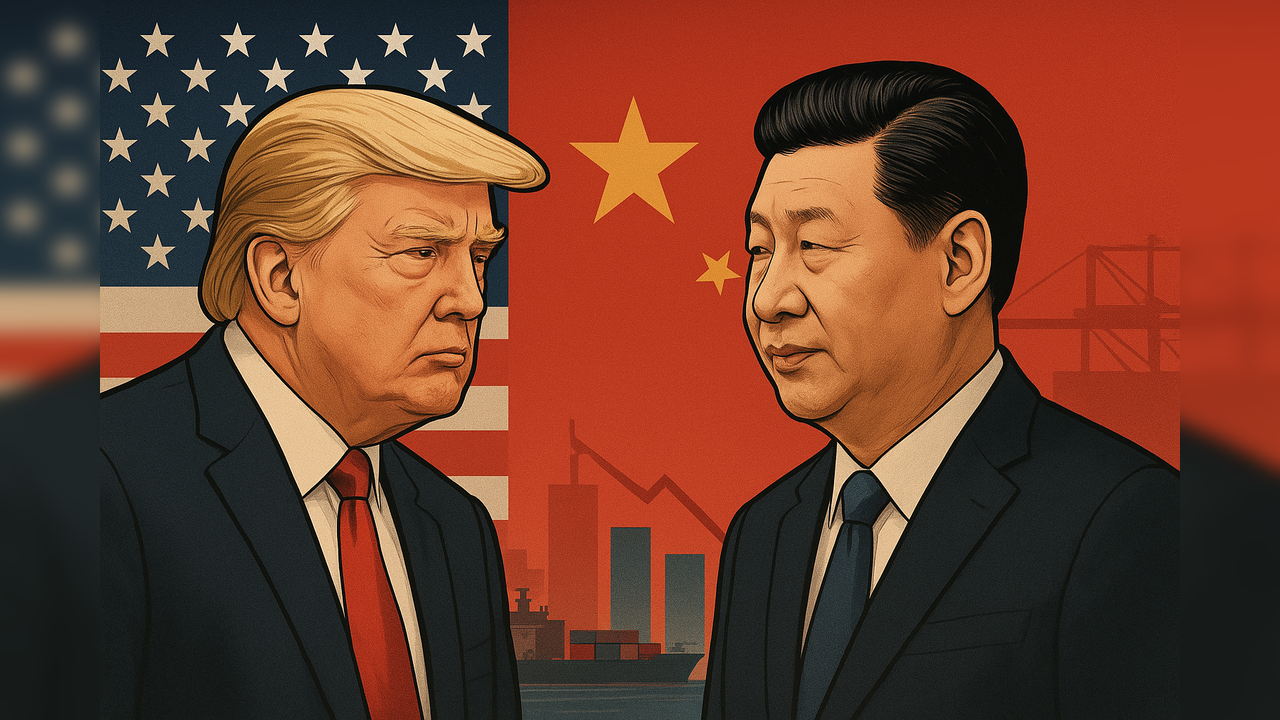
President Donald Trump’s tariffs were designed to punish Beijing by driving down Chinese exports to the American market. (AI Generated Image)
China’s exports to the US have plunged under Trump’s tariffs, but Beijing has expanded sales across Europe, Africa, and Southeast Asia, pushing its global trade surplus to historic levels. The trade war, now dragging into its latest round of negotiations, highlights not just Washington’s leverage but also Beijing’s ability to adapt, redirect, and quietly consolidate economic power abroad, reported WSJ in an article.
US Tariffs Hit Chinese Exports, But Not Its Global Dominance
President Donald Trump’s tariffs were designed to punish Beijing by driving down Chinese exports to the American market. In one sense, they worked: shipments to the US are down nearly 15% in 2025.
But beyond the American border, the story is starkly different. China’s overall global trade surplus surged to $785.8 billion through August, up from $612.6 billion last year, putting it on track to breach $1 trillion for the second consecutive year.
Beijing’s export machine has not slowed; it has shifted focus. Countries in Europe, Southeast Asia, Africa, and Latin America have become major buyers of Chinese goods, with electric vehicles, solar panels, and consumer electronics leading the charge.
Chinese EV brands are finding strong demand in Germany, France, and Italy, undercutting Western automakers with cheaper price tags. In Africa, discounted Chinese solar panels are driving a rapid energy transition, while in Latin America, Chinese-built heavy machinery and electronics are taking market share from US and European rivals.
This surge is no accident, it reflects decades of Chinese investment in global infrastructure through initiatives like the Belt and Road, which built roads, ports, and digital networks across developing nations. Those investments are now paying geopolitical and economic dividends.
Beijing’s Balancing Act: Strength Abroad, Weakness at Home
While China projects strength on the global trade stage, its domestic economy tells another story.
Recent figures show retail spending and factory output missed economists’ expectations in August, a sign that domestic growth is faltering despite government efforts to stimulate demand with subsidies, interest rate cuts, and looser home-buying rules.
Yet unlike in the US , China’s leadership benefits from tight media and internet controls, shielding the government from public criticism of economic turbulence. This gives Beijing breathing room to pursue a long-term strategy in its trade war with Washington.
China’s Pressure Points: Rare Earths and Soybeans
In any negotiation, leverage is key. And while the US has tariffs, China has rare earths and agricultural power plays.
This twin strategy underscores that the trade war is not just about tariffs, it’s about who controls the chokepoints in global supply chains.
The Geopolitical Ripple Effect
China’s recalibration has also reshaped alliances. While the US leans on traditional partners like Japan, South Korea, and parts of Europe to support its tariff campaign, China is deepening ties elsewhere:
By broadening its global reach, China reduces its dependence on US consumers while strengthening its position as a parallel economic hub.
The Road Ahead: Stalemate or Escalation?
For now, trade negotiations remain at a standstill. US Treasury Secretary Scott Bessent has said talks will resume in a month, but neither side appears ready to concede.
Analysts warn that if talks fail, Trump could raise tariffs further, potentially beyond 30%. But doing so risks further inflationary shocks at home, complicating the Federal Reserve’s path as it manages interest rate cuts.
Meanwhile, China’s strategy is clear: endure short-term pain, expand global influence, and remind Washington that it has cards to play.
The US –China trade war has reshaped global commerce. While Trump’s tariffs cut into Chinese exports to America, Beijing has used the moment to diversify, expand into new markets, and weaponize its control of critical resources. The result: China is not just weathering the storm, it may be quietly strengthening its global economic position while Washington grapples with inflation, supply chain vulnerabilities, and political backlash at home.